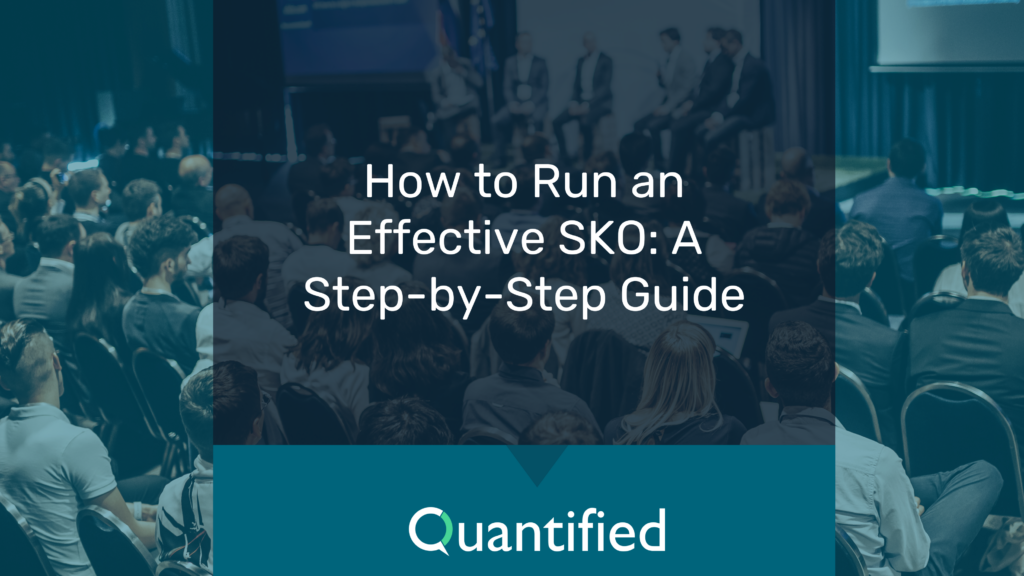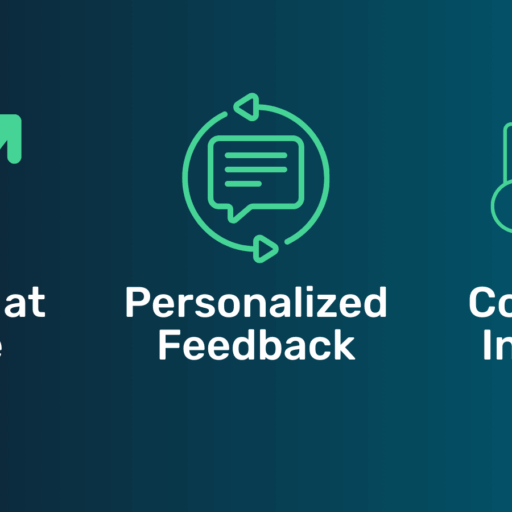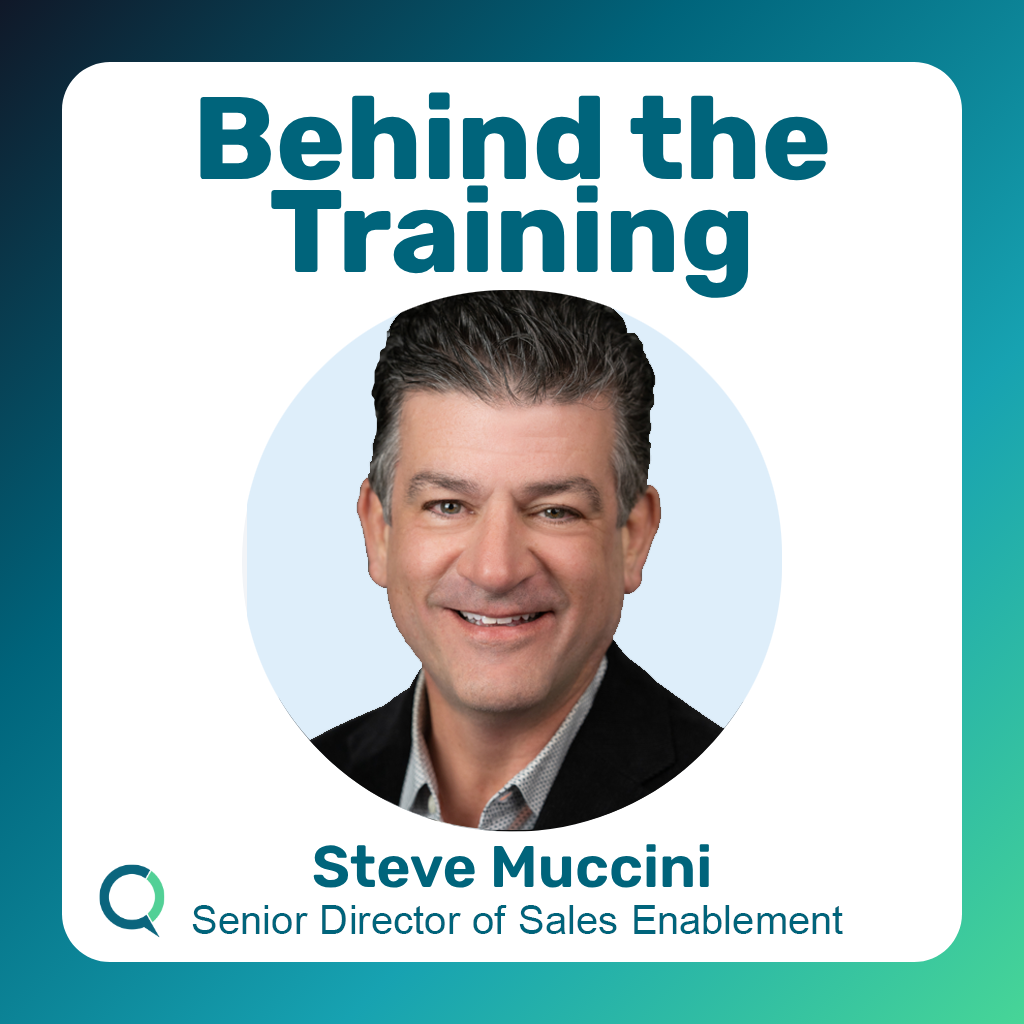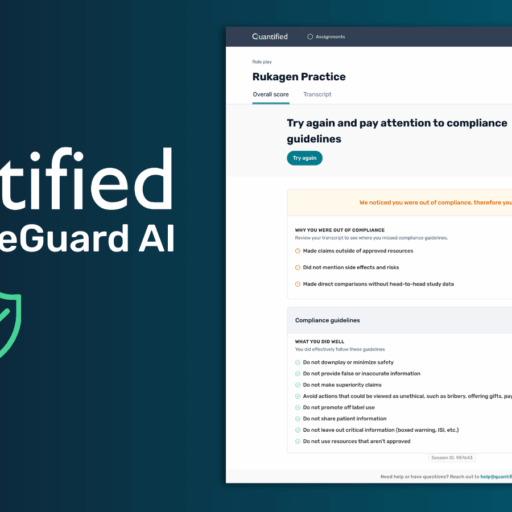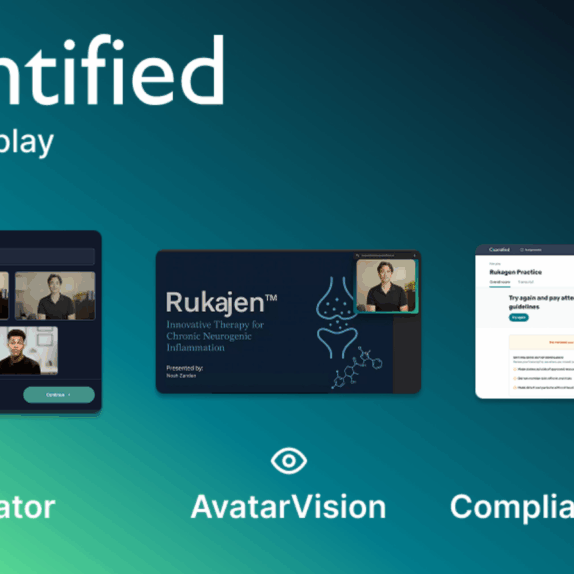- Alignment on Objectives
- Education on New Products
- Motivation and Recognition
- Training on New Strategies
What is an SKO?
A Sales Kickoff (SKO) is an annual event where companies energize their sales teams, unveil new strategies, introduce products, and set objectives for the year ahead. It’s a crucial opportunity to align the entire team with business goals, boost motivation, and ensure everyone is equipped to tackle upcoming challenges. SKOs typically include training sessions, recognition of achievements, and networking opportunities that strengthen team cohesion.
But a successful SKO goes beyond motivation—it must deliver actionable strategies and tools that empower the salesforce to succeed. Whether introducing new products, pivoting to different markets, or implementing a new sales methodology, a well-executed SKO ensures that everyone leaves equipped to achieve their goals.
Key Goals of an SKO
- Alignment on Objectives
- Education on New Products
- Motivation and Recognition
- Training on New Strategies
1. Alignment on Objectives
The primary goal of any Sales Kickoff (SKO) is to ensure that every salesperson is fully aligned with the company’s objectives, priorities, and how their role contributes to the overall strategy. Achieving this alignment drives team cohesion, ensuring everyone understands what success looks like for the year ahead.
Why Alignment is Critical
When a sales team lacks clarity on the company’s strategic objectives, it often leads to inconsistent messaging, fragmented efforts, and missed targets. Misalignment means reps may push different messages, use outdated materials, or focus on the wrong priorities—confusing prospects and wasting valuable selling time.
Best Practices for Achieving Alignment
- Clear Communication from Leadership: One of the most impactful moments of an SKO is when company executives present the high-level goals for the year. Leadership must paint a compelling vision for the company’s future, linking these broad objectives to day-to-day sales activities. This top-down approach helps reps understand how their individual performance contributes to the company's success. As sales leader Camille Crandall advises, teams need a “clear sense of purpose, beyond just meeting quotas”.
- Cross-functional involvement: Include teams from marketing, product, and customer success, not just sales. Involving these departments fosters a more unified understanding of how each function supports sales. When everyone understands their role in the bigger picture, alignment happens more naturally across the entire organization.
- Visualizing Success Metrics: Clearly outline how success will be measured. Whether through revenue growth, market share expansion, or customer retention, defining specific success metrics ensures all strategies remain laser-focused on the right outcomes. Reps should leave the SKO knowing exactly “what winning looks like” for both the company and their individual performance.
Pitfalls to Avoid
- Over-Complicating Objectives: Setting too many goals can dilute focus and create confusion. Keep the SKO focused on 3-5 core objectives, and ensure every session directly supports these priorities.
- Lack of Role-Specific Goals: While aligning on broad objectives is important, not all sales roles are the same. Provide tailored goals for different sales roles (e.g., account executives vs. sales development reps) to ensure everyone knows what’s expected in their specific position.
2. Education on New Products
A successful Sales Kickoff (SKO) should include a thorough deep dive into any new products or services being launched. For your sales team to sell effectively, they must comprehensively understand the product’s features, benefits, and competitive differentiators. SKOs are the perfect opportunity to equip the team with this critical knowledge.
Why Product Education is Essential
In highly competitive industries like life sciences or technology, product knowledge is a crucial differentiator. Prospects expect sales reps not only to understand the product but also to demonstrate how it solves their specific pain points. Without adequate product training, even the most experienced reps may struggle to articulate the product's value, resulting in missed opportunities or slower sales cycles.
Best Practices for Product Education
- Hands-on Product Demos: The most effective way for sales teams to learn about a new product is by using it themselves. Provide opportunities for hands-on demos during the SKO and encourage reps to practice delivering these demos to one another. Role-playing exercises are invaluable for simulating real-world customer scenarios. Quantified suggests incorporating AI-powered simulations to help reps refine their demo delivery and product messaging.
- Competitive Analysis: A crucial part of product training is understanding the competitive landscape. Equip your salespeople with insights on how your product stacks up against competitors and provide strategies to overcome common objections based on competitors' weaknesses. This context helps reps confidently position your product and highlight its key advantages.
- Customer Testimonials and Case Studies: Build confidence and credibility by incorporating real-world customer testimonials and case studies into the training. These success stories provide powerful examples of how your product delivers value, giving reps tangible evidence to share with prospects.
Pitfalls to Avoid
- Too Much Focus on Features: While it’s important to educate your team on product features, don’t stop there. Sales reps need to understand the benefits those features provide, how they solve specific customer pain points, and how they impact the client’s bottom line. Ensure the training is benefit-oriented rather than feature-heavy.
- Overwhelming Information: Avoid overwhelming your team with too much technical detail in a short period. Break the training into manageable segments, focusing on key points and reinforcing learning with post-SKO materials to ensure long-term retention.
3. Motivation and Recognition
Sales is a high-pressure field where sustained motivation plays a key role in keeping the team energized and focused on achieving their goals. An SKO provides the perfect platform to celebrate past achievements and set the tone for tackling new challenges in the year ahead.
The Psychology of Motivation
Celebrating wins publicly boosts morale and sets a precedent for excellence in the coming year. Recognition in front of peers not only motivates top performers but also encourages others to strive for similar success. It taps into intrinsic motivators like professional growth and peer recognition—often more powerful than external incentives alone.
Best Practices for Motivation and Recognition
- Celebrate Top Performers: Recognize the top-performing reps of the previous year, but don’t stop at accolades. Highlight why they succeeded. Whether they used innovative selling tactics, built strong customer relationships, or delivered exceptional service, their stories can serve as examples for others to follow.
- Incorporate Peer Recognition: Recognition from leadership is important, but peer recognition can be equally impactful. Introduce peer-nominated awards where sales reps can highlight each other’s achievements. This fosters a sense of camaraderie and mutual respect within the team.
- Inspire Through Storytelling: Bring in motivational speakers or share success stories from within the organization. Personal stories of overcoming challenges resonate deeply with salespeople, as they can relate those experiences to their own challenges in the field.
Pitfalls to Avoid:
- One-Size-Fits-All Rewards: Different team members are motivated by different things. While some may thrive on public recognition, others may prefer private acknowledgment or financial incentives. A mix of motivational techniques is key to keeping everyone engaged.
- Over-Reliance on Extrinsic Rewards: While SPIFFs (Sales Performance Incentive Funds) and bonuses are powerful motivators, don’t depend on them alone. Intrinsic motivators, like career growth opportunities and personal achievement, are equally important for sustaining long-term motivation.
4. Training on New Strategies
An SKO is the ideal venue for introducing new sales strategies or tools—whether it’s a CRM system, updated sales methodologies, or refined lead generation techniques. Thoroughly explaining these strategies and giving salespeople opportunities to practice them is essential to ensure smooth adoption.
Why Strategy Training is Critical
As markets evolve, so must your sales tactics. Changing market conditions, shifts in customer behavior, and advancements in technology all require adjustments in how your sales team operates. Introducing these strategies at the SKO ensures your team is equipped to meet the changing landscape and achieve success.
Best Practices for Strategy Training
- Realistic Scenarios: Use role-playing and AI-powered simulations to train reps on new strategies in realistic scenarios. Whether it’s handling objections with a new methodology or adopting a consultative sales approach, reps should leave the SKO feeling confident in applying these strategies to real-world situations.
- Breakout Sessions for Specific Roles: Not all strategies apply equally to every sales role. Breakout sessions tailored to specific roles—such as account executives or business development reps—allow for more focused training on the tactics that are most relevant to each team member.
- Interactive Workshops: Introduce new strategies through interactive workshops where reps can work in groups to solve case studies, practice techniques, and provide each other with feedback. This collaborative approach makes learning more engaging and ensures reps have the opportunity to practice new skills in a supportive environment.
Pitfalls to Avoid
- Failure to Provide Context: It’s not enough to introduce a new strategy without explaining why the change is happening. Provide context by explaining shifts in market conditions, customer needs, or competitive landscapes, and why these strategies are essential for future success.
- One-Time Training: One-and-done training rarely leads to lasting behavior change. Follow up after the SKO with additional training sessions, coaching, and reinforcement to ensure the new strategies are fully adopted and become second nature to your team.
Ensuring a Winning Year
By focusing on four key goals—alignment on objectives, product education, motivation and recognition, and strategy training—you can ensure your SKO is a high-impact event that drives performance throughout the year. Each of these goals plays a crucial role in shaping a motivated and well-prepared salesforce that is equipped to tackle new challenges and achieve greater success.
Proven Strategies for Your Next SKO—From the Experts
Approach your next SKO by zeroing in on activities that make the most difference. Bringing everyone together for a busy, in-person event is a big undertaking, and every second is precious. Maximize the ROI—and the energy—by adding these tips to your planning process.
Step by Step Guide to a Success SKO
Step 1: Define Your SKO’s Purpose
A successful SKO starts with a clearly defined purpose. This ensures every session supports a central objective—whether it's launching new products, unveiling a sales methodology, or shifting market focus. Without a central theme, the event risks feeling like a series of disjointed presentations.
Best Practice: Identify Your Driving Force
Camille Crandall, former seismic sales leader, advises going beyond setting big sales goals. “Identify the unique driving force that will inspire your team to crush their numbers this year,” she says. Whether it’s a new product launch, a market strategy shift, or a focus on customer experience, ensure the SKO reflects this theme in every aspect.
Common Themes for SKOs:
- New Product Launches: Focus on educating the team about features, selling points, and handling objections.
- Strategic Shifts: Align your team on new business strategies, such as entering new markets or adopting new methodologies.
- Process Updates: Use the SKO to train the team on new sales processes, CRM tools, or workflows.
Step 2: Plan Interactive and Engaging Activities
Long presentations often lead to disengagement. Instead, focus on creating interactive experiences that allow your team to practice new strategies and build relationships.
Tip: Create a Dynamic Experience
Jerry Pharr, a sales enablement expert, suggests breaking up sessions with an “internal trade-show-style booth experience,” where departments showcase updates relevant to sales reps.
Engaging SKO Formats:
- Internal Trade Shows: Set up booths where departments like product or marketing can highlight updates and tools relevant to sales.
- Workshops & Role-Playing: Allow reps to practice objection handling, product demos, or client meetings in real-world scenarios.
- Competitions: Incorporate gamification with sales-based challenges that build camaraderie while sharpening skills.
Step 3: Maximize Engagement with In-Person Activities
While virtual elements are convenient, remote presentations can lower energy levels at an SKO. In-person sessions create excitement and foster better engagement.
Pro Tip: Keep It Live and High-Energy
Kevin Williams, Chief Revenue Officer at Lytho, suggests focusing on activities and speakers that leverage in-person energy. “Only do things you can’t do on Zoom,” he says.
How to Maximize In-Person Impact:
- Dynamic Presentations: High-energy presentations that encourage interaction.
- Live Workshops: Hands-on activities and breakout sessions to foster engagement.
- Executive Q&A: Involve leadership in interactive discussions where reps can ask questions directly.
Step 4: Use AI-Powered Simulations for Training
AI-powered tools add a new dimension to SKO training, allowing reps to practice skills like handling objections or delivering product demos in a risk-free, realistic environment.
The Power of AI Simulations
Quantified highlights how AI simulations offer personalized, repetitive practice with instant feedback, boosting confidence and performance.
Benefits of AI in SKOs:
- Unlimited Practice: Reps can practice scenarios as often as needed.
- Instant Feedback: Real-time feedback helps reps improve on the spot.
- Realistic Scenarios: Simulations replicate real-world sales situations for practical experience.
Boost Readiness & Confidence
Sales kickoff (SKO) events address many different objectives, such as energizing the sales team, communicating goals, and keeping everyone up to date on product releases. Education is one of the top objectives behind a well-run SKO event. Traditionally, this training would take the form of hands-on demos and in-person role-play scenarios.
Step 5: Involve Executives Throughout the Event
Executive involvement goes beyond a keynote speech. Their presence throughout the SKO signals investment in the sales team’s success and creates a stronger connection to company goals.
Why Executive Presence Matters
“Executives should be present the entire time, not just for an opening speech,” says Kevin Williams. This participation shows the team that leadership is fully committed to their success.
Step 6: Follow Up with Ongoing Training and SPIFFs
A well-executed SKO doesn’t end when the event concludes. Reinforce what was learned with ongoing training and short-term financial incentives like SPIFFs to keep the momentum going.
Key Post-SKO Actions:
- Ongoing AI Simulations: Continue using AI tools to reinforce skills and key messages.
- SPIFFs: Offer short-term incentives to encourage quick wins and build on the SKO’s energy.
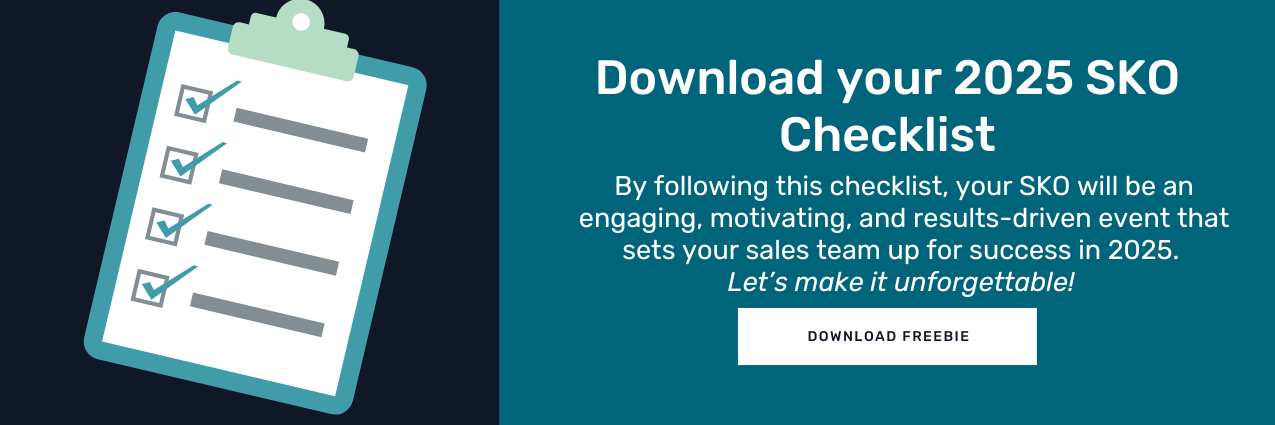
Driving Momentum for Continuous Success
By following these steps, you can create a high-impact SKO that energizes your team, aligns them with company goals, and equips them with the tools to succeed. With interactive activities, AI-powered training, executive involvement, and strong follow-up, your SKO will drive performance and engagement long after the event ends.
